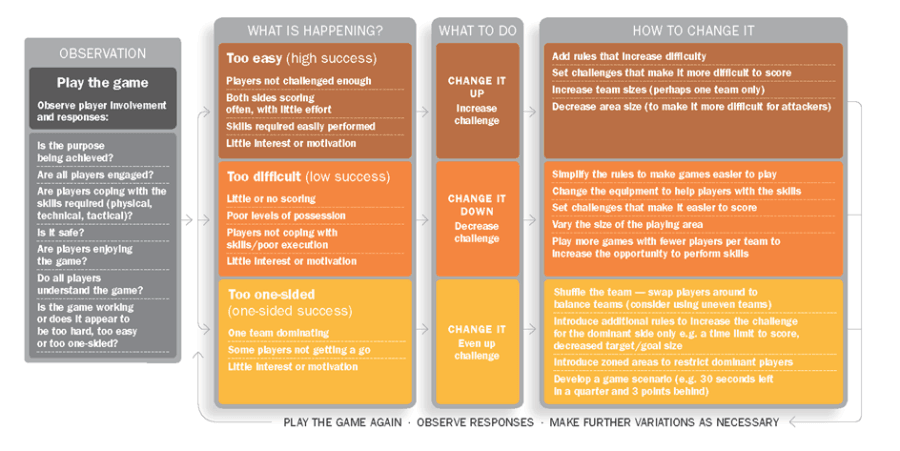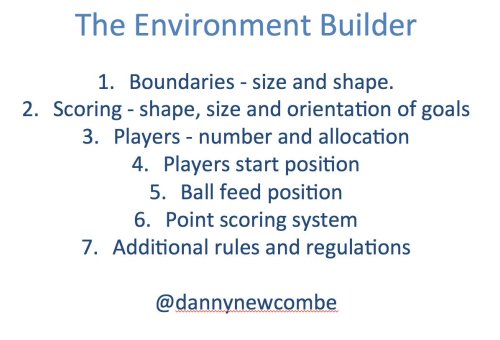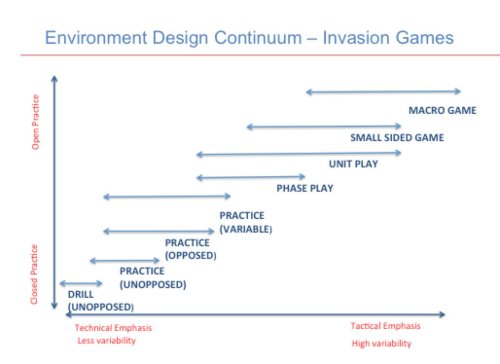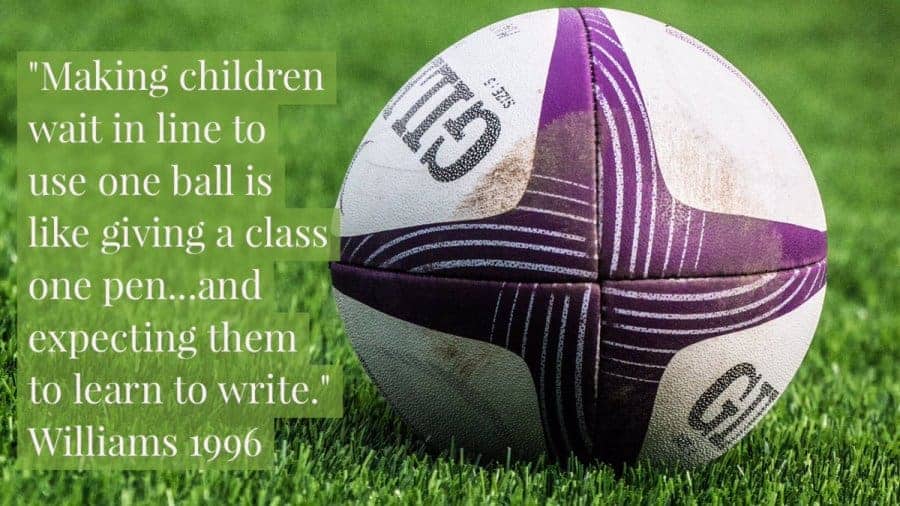At the heart of a games based approach to teaching is the challenge to the centrality of learning isolated and decontextualised techniques that will ‘allow’ the child to play. Instead of starting with the practice of the prerequisite techniques, the starting point is the game and play itself. It is through play that the learning needs become apparent. The priority is for children to understand the game and develop tactical awareness that can aid in decision making and give techniques some meaning and purpose.
Children are still practising their techniques, but in a dynamic way, where they develop both their perception and decision making whilst still working on improving their skill execution, but in context. The design of the game needs to suit the desired learning outcomes and the knowledge and prior ability of the children. This is done through providing modifications to the game to make it more or less challenging on a team or small group basis. Designing modified games presents a difficult challenge. No wonder then it is easier to have children stand in lines to practise technique and give correctional feedback then it is to design a series of games that have a clear explicit learning purpose and are progressively more challenging and complex.
The modification of games to shape play in order to focus the child’s attention on specific tactics, movements, perceptual cues and skill learning is a key element in a games based approach. For many years I have used the STEP framework to help in this process of modification. However for the last term I have been using two new frameworks:
- The CHANGE IT formula
- The Environment Builder
Activity not working? Change It:
Coaching
How to score
Area
Number of Players
Game Rules
EquipmentInclusion
Timehttps://t.co/6xThPTrtmP— Sporticus (@ImSporticus) September 30, 2016
The CHANGE IT formula is from Gene Schembri’s Playing for Life: Coaches Guide (well worth your time to read) to support an Australian Sports Commission initiative in increasing participation in sport and physical activity. This one focuses on a Game Sense approach to teaching games to children, to ensure their first experiences are positive, safe and inclusive. I have been using this formula to modify games within my PE lessons and I have found it to be a very logical and user friendly framework.

Not only is it a very good reminder of how and why a game might be changed, it offers an excellent flow chart for when you might want to change it. Simply ask yourself the following questions when observing your students playing the game you have designed:
- Are all players enjoying and/or engaged in the game?
- Is the purpose of the game being achieved?
- Are all players being challenged? (Is it too difficult, too easy, one-sided?)
If the answer is ‘no’, then CHANGE IT. However as Simon Nainby has wisely pointed out is don’t always be too quick to change things. Sometimes a bit of perseverance can help the learning process.


For my rugby coaching I have been using Danny Newcombe‘s Environmental Builder framework, based on a constraints led approach. It provides a useful and practical method to guide not only game modification, but task design, to ensure that they are always appropriate for the purpose, the environment, the context and for the players learning. The games that I am designing are becoming more representative of the sport with the correct level of competition and difficulty for the players. It also allows me to adapt games that I may have pitched at the wrong level or learning outcome without totally having to restart again within the session, which ensures that I keep players attention and focus for much longer periods of time. Having this lamenated and double sided on a card in my pocket is a very helpful reminder on how to modify things if needed.
Modification is an essential element when using a games based approach. Initially used to reduce the stress on technique so that children can engage intellectually with the game, which has positive benefits on both motivation and enjoyment. As children develop a better understanding of tactics and strategy, the complexity of the games can be increased to match their ability. Modification of games can make them more inclusive, as it allows them to be designed to match the developmental, emotional and social needs of the children playing them. It allows children to learn not only how to perform a technique but also when, where and why. STEPs, CHANGE IT and the Environment Builder all offer a workable framework for both the designing of games and their modification for effective learning to occur. Why not give one a go.

